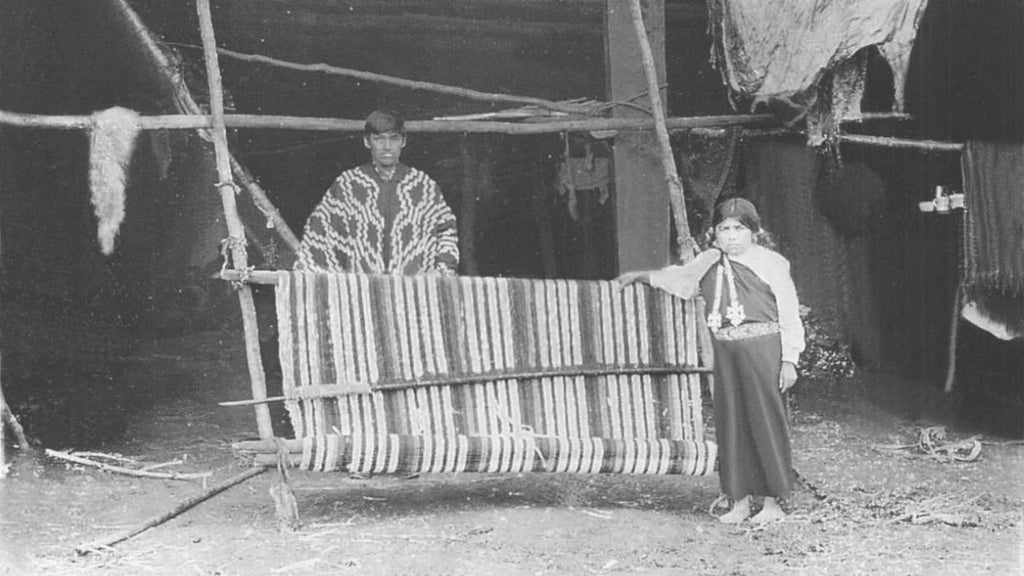
Juan Antonio Ríos Mapuche Museum Archive, Cañete
Mapuche textiles date back to pre-Columbian times. Archaeological finds from indigenous sites in the IX region of Araucanía have brought us to the present pieces from 1436, much older than our colonial and even more republican history. These pieces reveal that before the arrival of Columbus the raw material for ponchos and blankets was camelid wool and their colors came from dyes of vegetable and mineral origin.
But with the arrival of the Spanish to the continent, sheep also arrived on ships, a docile and domesticable animal whose wool adapts very well to local needs, and so do new dyeing techniques and artificial dyes. But what remains constant for centuries and to this day is the use of the loom or witral by the great weaver or düwekafe, who is the one who knows the tradition, the techniques, the designs.

Left. Manta, Temuco, Araucanía Region. Purchased by the MNHN in 1937
And within this rich and enormous textile tradition, the poncho or makuñ plays a fundamental role. Ponchos are as old as the settlement of our continent and constitute a fundamental piece of its Andean peoples. This design is an example of the finest Mapuche textiles. One of the highest-end pieces available in our store. A work of art and delicacy that is the most dignified and majestic example of our textile heritage. The design of its fretwork is taken from an original copy from the National Museum of Natural History (thanks to a wonderful initiative by Conadi and Artesanías de Chile). The particular technique for dyeing these blankets or Makun is called trarikan and consists of sectioned coloring of the warp threads through ties that reserve areas for the action of the dyes.

Left. Temuco area, Araucanía Region. Purchased by the MNHN in 1928.
Probably something like this was what a great Toki used to attend a Parliament in the middle of the Arauco War or an important Lonko to a ngillatun in peacetime. This specimen is hand-woven on a loom with pure southern sheep wool by Mapuche artisans from the Araucanía Region. With this high-end collection we want to promote and keep alive an art that cannot disappear. And in Cordillerana, in addition to museums, beautiful books and state programs, we believe that strengthening craftsmanship lies in strengthening its fair, sustainable and sustained trade. Recognizing everyone's heritage is recognizing that a traditional craft that does not find a place in our homes and in our lives is a craft destined to die.
In our online store you can buy the Gran Cacique Poncho and the Gran Toqui Poncho. For indomitable souls, and bodies seeking shelter, a warm embrace of ancient America.

